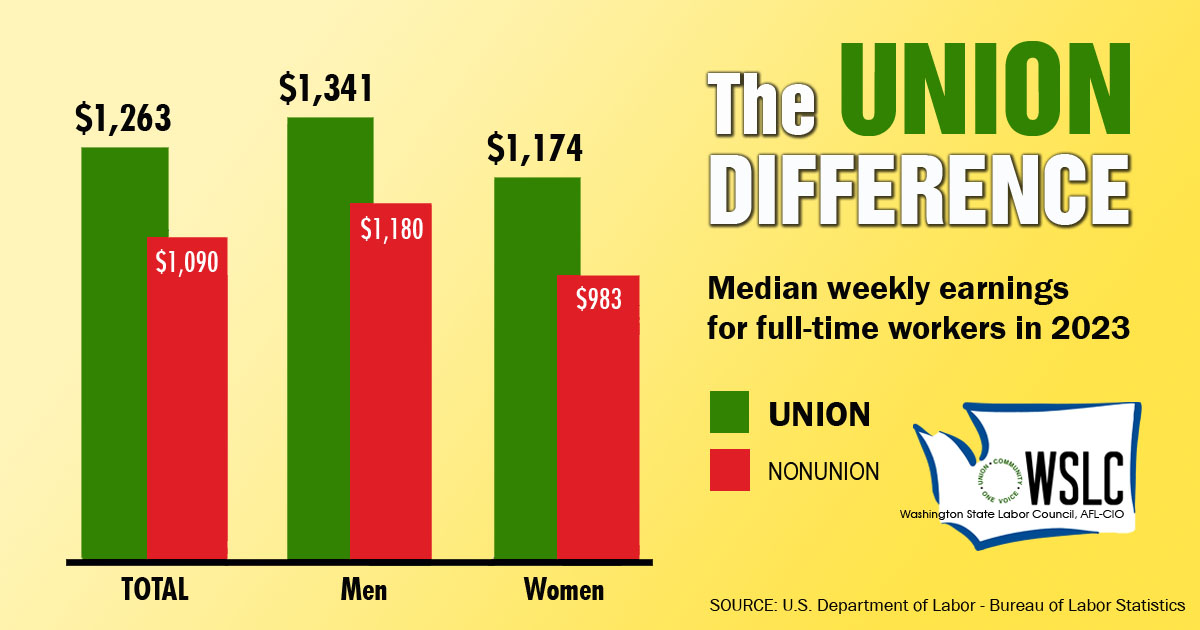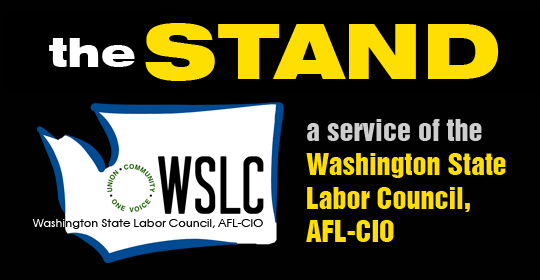SPECIAL REPORTS
The TRUTH about compromise-and-release
 On March 5, the State Senate passed SB 5566, which would allow employers in Washington state to settle workers’ compensation claims with “compromise-and-release” lump-sum buyouts of injured workers. This would be a radical change for the state’s workers’ compensation system, which is a national model for its low costs and high benefits — a system that got a resounding vote of confidence from voters last fall. Now, the corporate groups that unsuccessfully sought to privatize it, are playing down the dramatic effect SB 5566 would have and making misleading or false claims about the system.
On March 5, the State Senate passed SB 5566, which would allow employers in Washington state to settle workers’ compensation claims with “compromise-and-release” lump-sum buyouts of injured workers. This would be a radical change for the state’s workers’ compensation system, which is a national model for its low costs and high benefits — a system that got a resounding vote of confidence from voters last fall. Now, the corporate groups that unsuccessfully sought to privatize it, are playing down the dramatic effect SB 5566 would have and making misleading or false claims about the system.
Here are some of their claims, and the TRUTH about those claims:
Download a printable PDF of this Fact Sheet.
 CLAIM: Washington’s workers’ compensation system has a 95% probability of going broke and will soon be unable to pay benefits.
CLAIM: Washington’s workers’ compensation system has a 95% probability of going broke and will soon be unable to pay benefits.
This is absolutely false. It is based on December 2010 findings by a private actuarial firm (not the State Auditor, as is often reported) that there is a 95% chance that the Accident Fund Contingency Reserve will be insolvent in the next 5-year period. That fund is like a rainy-day fund and is only a very small portion of the system’s current total assets of $11 billion.
That’s why the State Auditor’s assessment of the actuary’s report says, “It is important to note that insolvency [having liabilities in excess of assets] is not necessarily a key indicator of the accounts’ ability to pay claims… The probability that the accounts would not have sufficient cash and/or invested assets to pay benefits over the next 10 years is extremely low.”
In other words, the system is not “going broke” and there is very little danger to the system in the short term. The Auditor recommends long-term changes to improve solvency, but L&I is already reporting that the system’s fund balance is SIGNIFICANTLY HIGHER today than it was during the 2009-2010 audit period, which reduces pressure to increase rates.
CLAIM: Workers’ comp rates are “skyrocketing” and the system is “unsustainable.”
“Skyrocketing” is in the eye of the beholder, but an objective look at the rate history shows that recent increases have actually been LOWER than those caused by previous recessions, despite the fact that the Great Recession of 2008-10 was long and deep, and employment levels have yet to recover.

Those moderate increases would have been even lower — and the system would be on more solid footing today — had rates not been reduced 2% in 2007 and a 6-month “rate holiday” granted — where employers and workers paid NOTHING for the medical portion of their insurance. That cost the system $315 million, or the 2007 equivalent of a 35% rate decrease. By comparison, the 12% rate increase in 2011 brought in $196 million.
CLAIM: SB 5566 addresses the problem of rising costs of long-term disability pensions.
Compromise-and-release buyouts do NOTHING to address the problem. They don’t get people back to work. They don’t promote safer workplaces.
Buyouts are simply a benefit cut. The system only saves money if injured workers accept less than what they would otherwise get. Every dollar “saved” comes directly from injured workers’ pockets and when the money runs out, the cost of those “savings” are shifted to social services for disabled workers with no income. That’s why some states (like Texas and New Mexico) are increasingly regulating and restricting these buyouts because of cost-shifting from workers’ compensation to taxpayer-funded public assistance programs.
CLAIM: Compromise-and-release buyouts are voluntary. No one is forced to take them.
This ignores the reality of families in crisis after losing their income and suddenly facing a disabling injury. Other states have found that injured workers are routinely pressured to settle out of desperation, because they can’t afford a decent attorney, due to exasperation with the claims/litigation process, and financial duress. Compromise-and-release buyouts create a financial incentive for employers to exacerbate that duress by appealing the claim and dragging the process out.
Supporters of SB 5566 know this. They are counting on the fact that many workers will settle for less out of ignorance and/or desperation. Otherwise, it doesn’t save any money, so what’s the point?
CLAIM: Washington is one of only five states that doesn’t allow lump-sum buyouts.
This is true. It’s also true that Washington is one of only four states with a publicly run system, and voters in every single county in this state overwhelmingly chose to keep it that way. Washington is a leader in many areas of state government and voters want state policies to be judged on their merits, NOT on whether we are outliers. Otherwise, we would have a state income tax like 43 other states and a corporate income tax like 47 other states.
Solutions that DON’T put injured workers and their families at risk
On March 14, Gov. Chris Gregoire signed Senate Bill 5801, which directs the Department of Labor and Industries to create a statewide provider network for injured workers, as well as expand access to the state’s Centers for Occupational Health Education. The legislation — supported by both labor and business — is expected to save $218 million over the next four years. Organized labor has also supported HB 2002, which passed the House but has languished in the Senate. It would help employers — particularly small businesses — return injured workers to light duty/transitional work via wage subsidies.
These are significant reforms that will save the system hundreds of millions of dollars WITHOUT putting injured workers and their families at risk, as SB 5566 does.
This special report was prepared by David Groves of the Washington State Labor Council, AFL-CIO.






